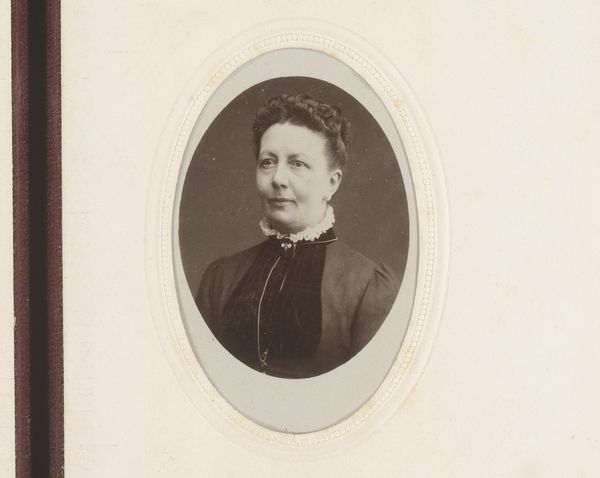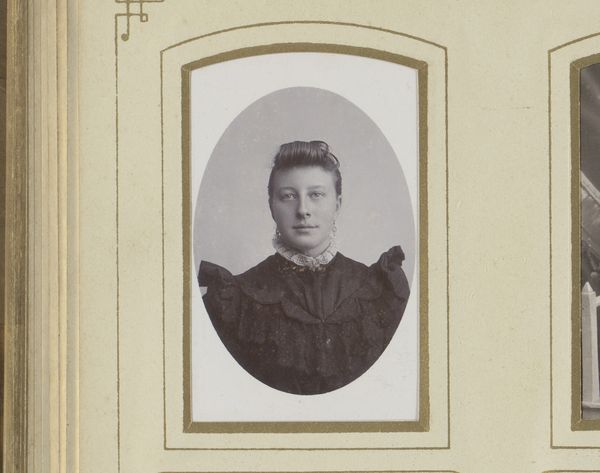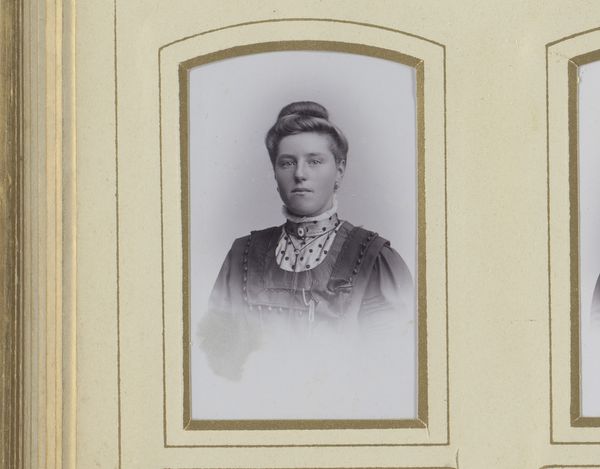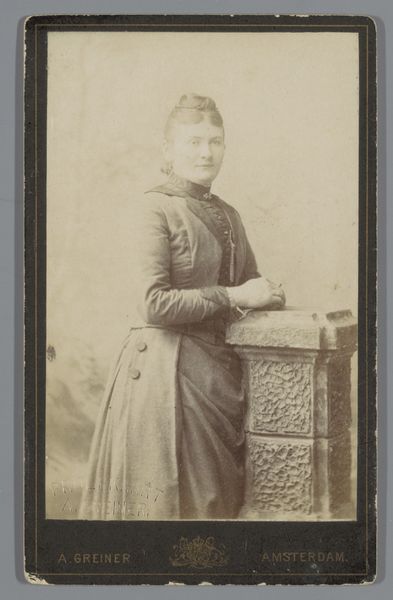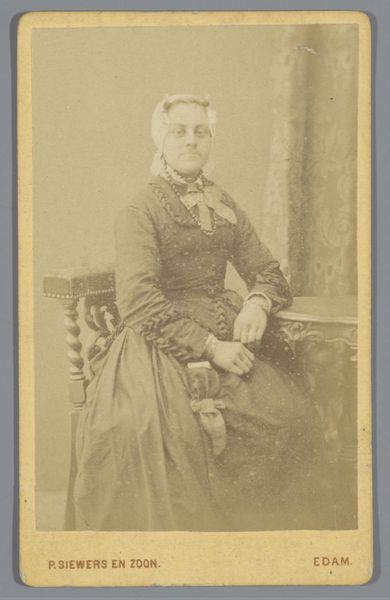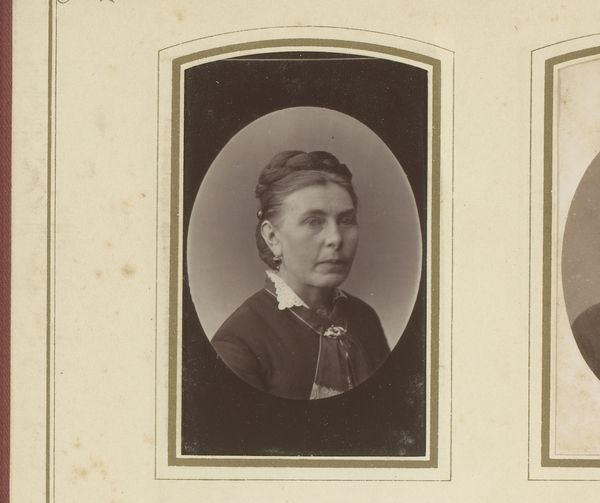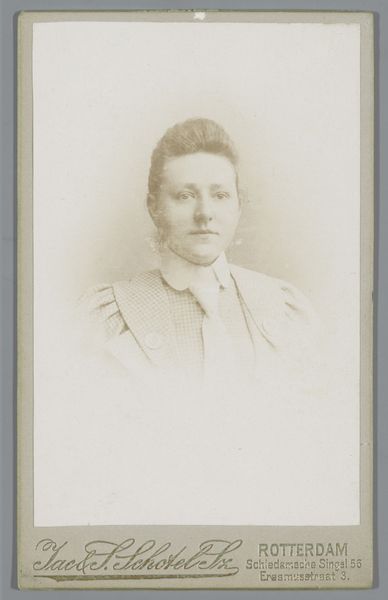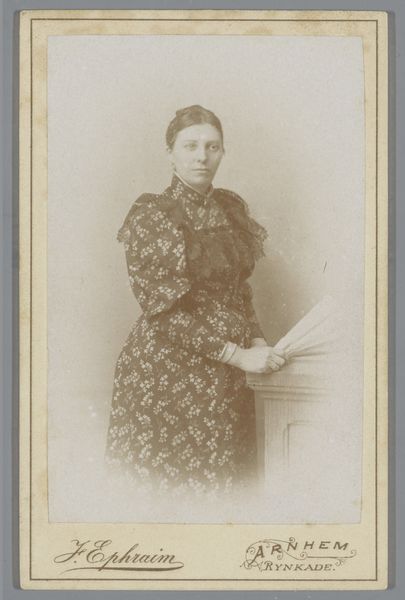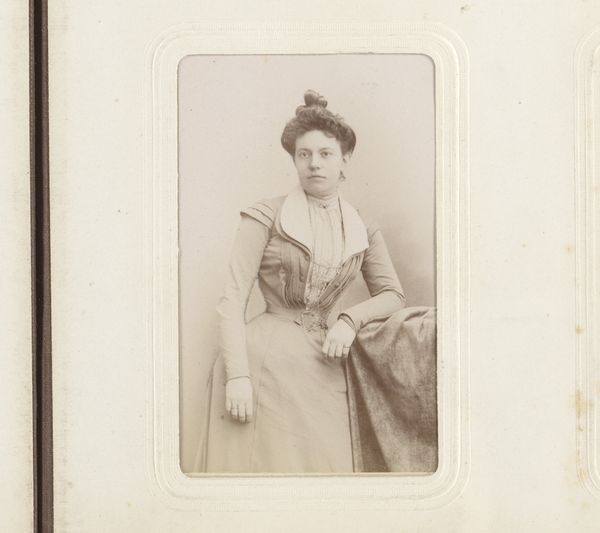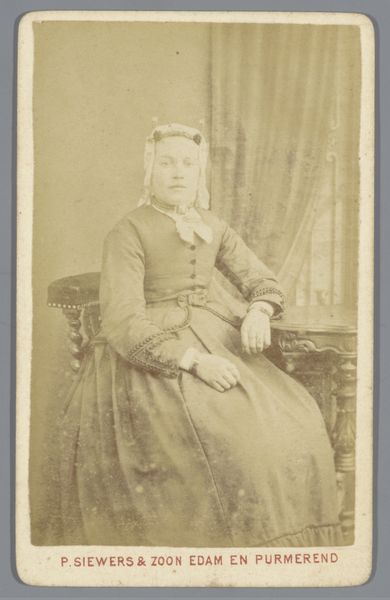
print, photography
#
portrait
#
pictorialism
# print
#
archive photography
#
photography
#
historical photography
#
realism
Dimensions: height 180 mm, width 91 mm
Copyright: Rijks Museum: Open Domain
Curator: Up next, we have a striking print, a portrait of Christine Henriette van Toulon van der Koog Tijdeman by Hugo Thiele, likely created between 1907 and 1911. Editor: The sepia tones lend it an air of gravitas. The composition, while traditional, evokes a sense of stillness, almost melancholy. There's an intimacy too, like glimpsing a private moment. Curator: It's a fantastic example of Pictorialism, where photography aimed for artistic effect. Think soft focus, and a focus on aesthetic beauty over strict representation. Look at the layering of textures in the image. Editor: Precisely! And what's she holding? It seems to be a string of pearls, or perhaps beads – items associated with wealth and femininity. It’s more than just an accessory; it’s a carefully placed symbol. Curator: The very act of producing such an image – consider the material processes involved. The chemicals, the printing techniques, the paper itself… these were still relatively novel during the early 20th century. Photography was still finding its place amongst the traditional visual art forms, like painting, at the time. It sought to emulate and even to replace traditional portraiture practices. Editor: It is a medium fighting for legitimacy, certainly. Looking closely, there's an intriguing interplay between light and shadow on her face. It guides my eyes and highlights the expression—thoughtful and self-assured. This is reinforced by her clothing; very clearly denoting a particular place and status within society. Curator: The choice of clothing undoubtedly reflects societal expectations, yet also demonstrates her engagement in the consumer culture of her time. One can imagine the labor involved in creating that garment; it stands as an artifact, a document, of labor conditions and textile production methods. Editor: The pearl string adds to the layered narrative. It hints at family legacy and personal history – potentially a memento passed down through generations. It's this continuity that truly interests me. I see an acknowledgement of place, and a claiming of identity within that space. Curator: Absolutely, and by considering the image production itself, the decisions around materials, techniques, we also understand more about that original context. It becomes clearer how art objects were constructed and consumed during that period. Editor: I agree. These portraits remind us how images, especially those of people, have the power to preserve memories, to tell stories. What might seem a static picture actually ripples outwards with possible meanings. Curator: By acknowledging both the process of production and these layered, potent, images, we gain a fuller picture of this historical figure and era. Editor: Indeed. This portrait, as still and quiet as it is, provides an enduring mirror reflecting aspects of societal ideals, and of ourselves.
Comments
No comments
Be the first to comment and join the conversation on the ultimate creative platform.
